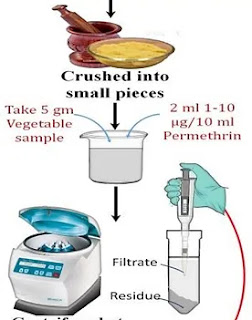ESA - VOLUME II SPECIAL THEMATIC ISSUE 2
VOLUME II SPECIAL THEMATIC ISSUE 2
Published Papers
Environmental Toxicity and Oxidative Stress on Gonads of Fishes
DOI: 10.5281/zenodo.7524329
The knowledge of oxidative stress in fish and other animals has a great importance in the environmental and aquatic toxicological studies. Oxidative stress is evoked by many chemicals, including some pesticides, metals and other organic pollutants. Antioxidant defense systems in fish and other animals can be used to assess a specific area of toxicity. The present understanding of the role played by numerous chemical and environmental toxins in the onset of oxidative stress in the gonads of fishes is summarized in this article. These toxins play a significant role in the development of reactive oxygen species by inducing oxidative stress in both aquatic and terrestrial organisms. Reactive oxygen species are produced in excess, which causes oxidative damage such as lipid peroxidation, protein and DNA oxidation, and enzyme inactivation. This review paper reveals how different natural and artificial toxins affect the reproductive capability and capacity of fishes, by showing how these toxins initiate oxidative stress and how in turn affect the structure, anatomy, physiology and functioning of gonads as well as reproductive cells. Antioxidant defense mechanisms are employed as biochemical indicators of oxidative stress. The study of these biomarkers and their effects can be used for biomonitoring the level of environmental toxicity in different organisms.
Molecular Biomarkers as Key Factors to Evaluate the Extent of Industrial Pollution Exposure
DOI: 10.5281/zenodo.7527951
Over recent decades, environmental pollution is rapidly increasing because of the anthropogenic activities of uncontrolled development, for example, industry, transport, agriculture, and urbanization, which generates harmful contaminants for living organisms including humans. These contaminants get accumulated in the organism via different routes and get bioaccumulated in different tissues exerting detrimental effects at different levels (molecular, cellular and physiological levels). The measurement of biological assays in sentinel species to access quality and changes of the environment is known as environmental biomonitoring which provides an indication of environmental stress. Several biomarkers evaluate the nature and extent of the exposure and evaluation of adverse biological responses to pollutants in a biomonitoring program of the aquatic environment. These include behavioral response, genotoxicity (comet assay and micronucleus assay) and oxidative stress. Here we present the importance of these biomarkers.
Assessment of Ground Water Pollution by Heavy Metals in Some Residential Areas in Kurdistan Region of Iraq
DOI: 10.5281/zenodo.7625078
Groundwater is a precious resource, and the life of humans depends on its quality. Public health is extremely concerned about the contamination of groundwater with heavy metals that come from either anthropogenic or naturally occurring soil sources since it can have detrimental impacts on both plant and animal life. The main objective of the present study was to determine and assess the concentration of heavy metal contamination in groundwater and to understand potential sources of contamination. Heavy metals such as Zn, Cu, Pb, Mn, Fe, and Cd are examined. Atomic Absorption Spectrophotometer (AAS) testing was done on groundwater samples that were taken from 10 wells in the study area. In groundwater samples, physical factors, including Electrical Conductivity (EC), Total Dissolved Solids (TDS), and metals like Cd and Pb were found to be over the allowed levels advised by international standards. The analysis revealed that the levels of Cd and Pb in the groundwater samples exceeded those recommended by the World Health Organization, Environment Production Agency and Iraqi standards. According to the findings, the maximum concentrations of Cd, Pb, Zn, Cu, Mn, and Fe were, respectively, 0.693, 0.42, 0.402, 0.0851, 0.068, and 0.04 mg/L. The groundwater samples from the research area demonstrated levels of the heavy metals in the following order: Cd> Pb> Zn> Cu> Mn> Fe. It was concluded that two heavy metals, cadmium and lead, and the percolation of dissolved salts were to blame for the groundwater's declining quality. Due to elevated amounts of harmful metals, the community's groundwater is therefore dangerous for drinking in some areas. It was recommended that either chemical precipitation, ion exchange, or reverse osmosis be used on a regular basis to treat the heavy metal concentration in groundwater sources.
Toxicological Studies as a Tool to Restore Environmental Conditions
DOI: 10.5281/zenodo.7524187
How helpful are these tests for acute toxicity, has been questioned by many researchers. Numerous ecotoxicologists claim that the advantages of these tests lie in their ability to recreate certain environmental conditions in the lab, which allows for the evaluation of acute toxicity afterward. Whether these acute tests provide useful information on how a certain substance affects individuals and communities is a related question. The other species are not taken into consideration if testing is done on a specific species. Because of this, there is always some debate over their accuracy or the usefulness of extrapolating from one species to another. But that study on a single species, provides a piece of information which will be helpful in creating the compilation of toxic effects of a particular compound on different species.
Insects and Arachnids as Bioindicators of Heavy Metal Toxicity in Lahore
DOI: 10.5281/zenodo.7562242
Heavy metal toxicity is a profound reason for the decline in population of insect pollinators as it transfers through food chain and affect the physiological aspect of the insects. Thus, the heavy metal analysis in different insects such as butterfly (Pieris rapae), honey bee (Apis dorsata) and arachnid spider (Pholcus phalangioides) were examined by using atomic absorption spectrophotometer. The aim of the study was to analyse the contamination and accumulation of heavy metals (Hg, Pb, Cr, Cd, Ni) in insect species as ecological indicator. It was revealed that the mercury (Hg) was in the highest concentration in all the insect samples and the nickel in lowest concentration. Data was statistically evaluated using one way ANOVA and post hoc analysis with significant value 0.05 was applied in case of p<0.05 suggested that all insects were good ecological indicator. There was no significant difference in lead, chromium and nickel concentration of honey bees, spiders and butterflies. Honey bees varied significantly p< 0.02 with the spiders and butterflies for cadmium. For mercury, the spiders and honey bees were non-significant and the butterflies were significant p< 0.03 with the spiders and honey bees. Present study indicated that heavy metals contamination is the major environmental and health concern in Pakistan and insects can be used as bioindicator for environmental pollution.
Heavy Metal Remediation: A much-needed Strategy for Removal of Environmental Contaminants
DOI: 10.5281/zenodo.7665592
Arsenic, cadmium, and lead are three non-vital heavy metals that are harmful to the environment, food safety, and the health of both humans and animals whenever present in excessive quantities. Poisonous metals and metalloid soil can be found worldwide. In higher amounts, some may cause neurological and behavioral abnormalities, particularly in children, while others are endocrine disruptors, carcinogens, teratogens, and mutagenic. The prevention, control, and remediation of heavy metal contamination have grown to be a top national priority in light of the real situation with soil pollution in our nation. To eliminate this kind of pollution, a variety of procedures have been used, including chemical, physical, biological, and integrative methods. Using plants and associated soil bacteria, phytoremediation lowers pollutant concentrations or their hazardous effects on the environment. It is a relatively new method that has gained widespread appeal for being an affordable, effective, unique and environment-friendly technique. The distribution of heavy metals in the environment, their sources, and the ecotoxicity they have on the environment are thoroughly explained in this review paper. Some of the procedures for creating heavy metal-free soil by using various soil remediation techniques are also described.
SUBMIT YOUR BEST RESEARCH PAPERS




Comments
Post a Comment